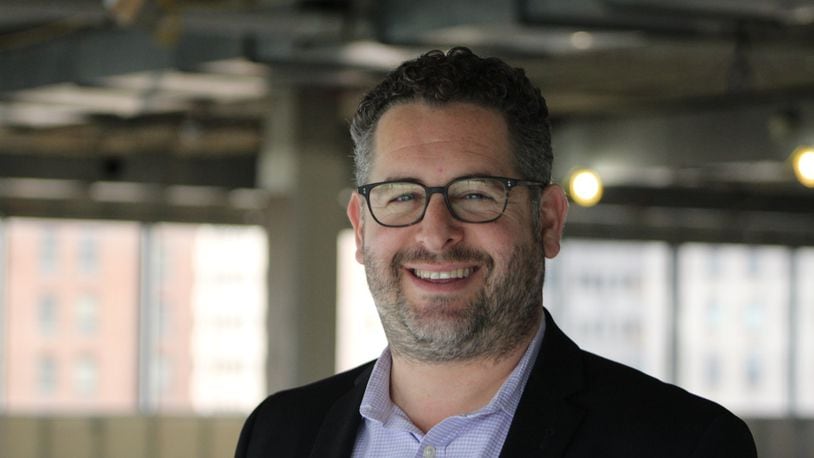RELATED: Taylor Communcations to move hundreds of employees downtown
Many downtown buildings are vacant or very close to it, and the structures targeted for redevelopment primarily are expected to be converted into housing.
But downtown’s upswing — driven largely by its hot housing market — is luring employers to move or expand in the center city, wanting to both benefit from and contribute to the urban revival, officials said.
Representatives from Olymbec, the Canadian real estate rental agency that owns the 111 W. First St. building, were in Dayton this week and toured other downtown office properties, including at least one they may consider acquiring.
“We look at everything, but there is one in particular we are looking at now,” said Michael Matthews, vice president of leasing with Olymbec.
Last week, Taylor Communications announced it will lease eight floors at the 111 W. First St. building, occupying about 132,000 square feet of space.
Taylor could have 75 or more employees on each floor, who are expected to start moving in this September.
Taylor will maintain a presence at its current home at the Standard Register campus on Albany Street on Dayton’s west side.
Taylor last year announced it would stay in Dayton after the city and Montgomery County pledged to provide financial incentives and other assistance.
RELATED: Taylor pact requires home demolition investment
Taylor will have about 700 workers split between the two locations. Documents obtained by this newspaper suggest Taylor will have more than 500 employees at the 11-story First Street office tower.
Olymbec last year paid $645,750 for the 111 building, which had lost tenants after changing hands multiple times. The property was foreclosed on about 10 years ago and at the time sold at auction for $3.2 million. But the financial struggles continued.
The building right now is only partially occupied by users including the Dayton Education Association, attorney Jeffrey Rezabek and other service professionals.
But the building should be about 92 percent filled when Taylor finishes moving in. And Olymbec is in discussions with a potential restaurant user for first floor space.
Olymbec, which was drawn to the building because it was cheap, planned to renovate the 165,000-square-foot tower floor by floor to attract a collection of small tenants, said Matthews.
But Taylor was hunting for space downtown, and Olymbec did everything it could reach a deal, Matthews said.
“Honestly, we got lucky,” Matthews said. “We bought a building for not much money, and there happened to be a whale that came around within a year and a half within that purchase.”
RELATED: Olymbec proposes a glow-in-dark building for downtown
Olymbec plans to upgrade the elevators, expand the lobby and make other improvements.
The Taylor deal has emboldened Olymbec, which sees promise in downtown Dayton’s office market.
“We’re 1-for-1,” Matthews said.
Office buildings in Dayton are cheap to buy and new and successful housing downtown points to continued urban renewal, officials said.
“We think the arrow is pointing up for Dayton,” Matthews said.
Taylor’s move will add hundreds of jobs to the Central Business District’s workforce of roughly 21,000 people, which counts workers in Webster Station.
Most job growth comes from small businesses adding fairly small numbers of workers, so Taylor’s move is a big deal and a big win for Dayton, said Mayor Nan Whaley.
Whaley said the strong demand for downtown housing and increased housing options is fueling interest in urban office space as Dayton moves towards a 24 hour environment.
“People want to work there as well as live there,” she said.
About the Author
